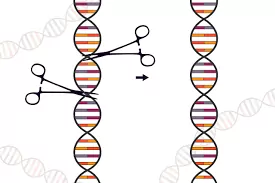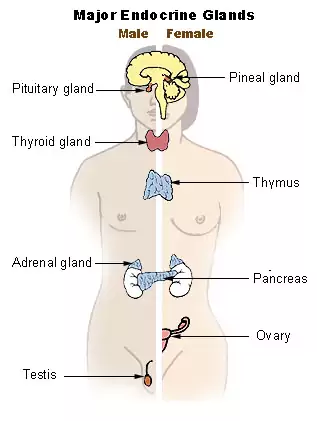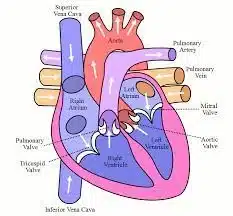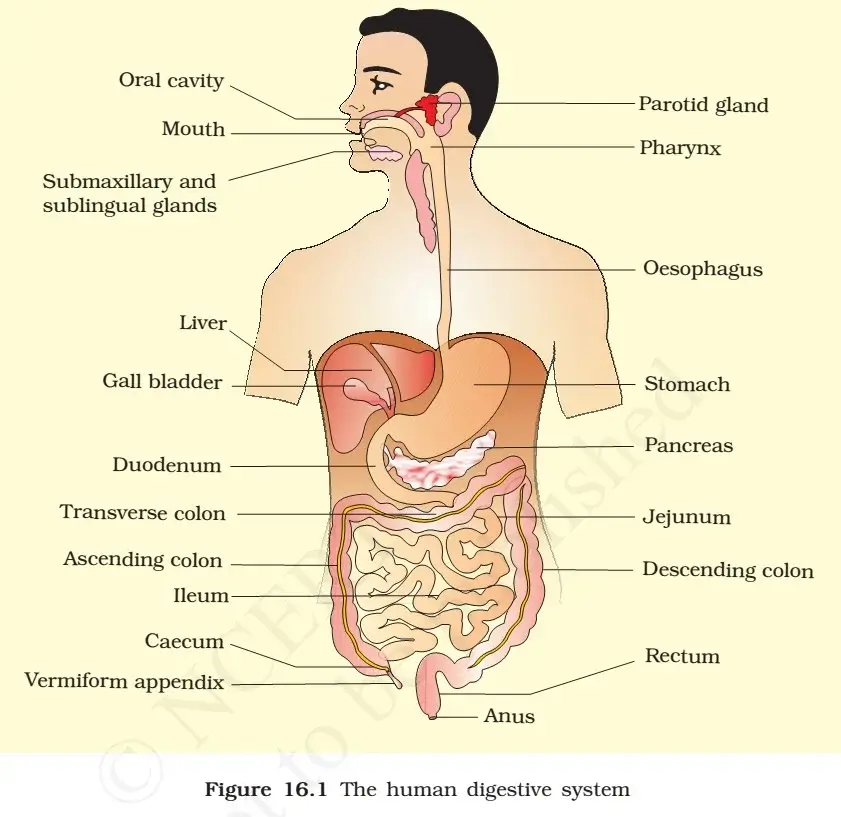Genome Editing And CRISPR-Cas9 Technology
Genome editing (also called gene editing) is a group of technologies that give scientists the ability to change an organism’s DNA, leading to changes in physical traits, like eye color, and disease risk.
- These technologies act like scissors, cutting the DNA at a specific spot. Then scientists can remove, add, or replace the DNA where it was cut.
- Several approaches to genome editing have been developed. A recent one is known as CRISPR-Cas9, which is short for clustered regularly interspaced short palindromic repeats and CRISPR-associated protein 9, has made it easier than ever to edit DNA.
- CRISPR is simpler, faster, cheaper, and more accurate than older genome editing methods.

How does Gene-editing work?
- In 2012, scientists discovered that CRISPR is a key part of the “immune system”. For instance, when a virus enters a bacterium, it fights back by cutting up the virus’s DNA and use them to create DNA segments known as CRISPR arrays. The CRISPR arrays allow the bacteria to “remember” the viruses (or closely related ones). If the viruses attack again, the bacteria produce RNA segments from the CRISPR arrays to target the viruses’ DNA. The bacteria then use Cas9 or a similar enzyme to cut the DNA apart, which disables the virus.
- The CRISPR-Cas9 system works similarly in the lab.
- To edit a gene of interest, the short RNA sequence that perfectly matches with the DNA sequence that has to be edited is introduced. Once it binds to the DNA, the Cas9 enzyme cuts the DNA at the targeted location where the RNA sequence is bound.
- Once the DNA is cut, the natural DNA repair mechanism is utilized to add or remove genetic material or make changes to the DNA.
The CRISPR-Cas9 gene-editing tool thus has two components. They are:
- a short RNA sequence that can bind to a specific target of the DNA and
- the Cas9 enzyme which acts as molecular scissors to cut the DNA.
Application of Gene-Editing
- Agriculture: It is being tried out in agriculture primarily to increase plant yield, quality, disease resistance, herbicide resistance and domestication of wild species.
- The huge potential to edit genes using this tool has been used to create a large number of crop varieties with improved agronomic performance; it has also brought in sweeping changes to breeding technologies.
- Genetic-Research: CRISPR systems are already delivering superior genetic models for fundamental disease research, drug screening, and therapy development, rapid diagnostics, in-vivo editing and correction of heritable conditions.
- Scientists are working on the theory that CRISPR might be used to boost the function of the body’s T-cells so that the immune system is better at recognizing and killing cancer.
- Disorders of the blood and immune system are other potential targets.
- Medical Treatment: CRISPR/Cas9 has also been seen as a promising way to create potential genome editing treatments for diseases such as HIV, cancer or sickle cell disease.
- Such therapeutics could inactivate a disease-causing gene, or correct a genetic mutation.
- Researchers in China edited human embryos to try to correct a faulty gene that caused an inherited blood disorder.
- Therapeutic Cloning: It is a process whereby embryonic cells are cloned to obtain biological organs for transplantation.
Issues Involved
- Debate in Agriculture Genetic Modification: There are concerns over the inadvertent effects, such as the creation of food that can cause an allergic reaction.
- Two studies, one from the Karolinska Institute, Sweden, and the other from the biopharmaceutical company Novartis, have highlighted that CRISPR-Cas9-edited cells might trigger cancer.
- Ethical concerns : It arises when genome editing, using technologies such as CRISPR-Cas9, is used to alter human genomes.
- Most of the changes introduced with genome editing are limited to somatic cells, which are cells other than egg and sperm cells. These changes affect only certain tissues and are not passed from one generation to the next.
- However, changes made to genes in egg or sperm cells (germline cells) or in the genes of an embryo could be passed to future generations.
- Germline cell and embryo genome editing bring up a number of ethical challenges, including whether it would be permissible to use this technology to enhance normal human traits (such as height or intelligence).
- Based on concerns about ethics and safety, germline cell and embryo genome editing are currently illegal in many countries.
- Genetic Inequality: Through Gene-editing, wealthy parents can buy the latest offspring upgrades for their children.
- This will lead to the emergence of genetic haves and have-nots and even greater inequality than the present world already lives with.
- Some of the key scientists in this field have concerns about the potential misuse of a technology that could be used for eugenics, to create genetic discrimination.
Status In India
- In India, several rules, guidelines, and policies backed by the “Rules for the Manufacture, Use, Import, Export and Storage of Hazardous Microorganisms/Genetically Engineered Organisms or Cells, 1989” notified under the Environment Protection Act, 1986, regulate genetically modified organisms.
- Apart from it, the National Ethical Guidelines for Biomedical and Health Research involving human participants, 2017, by the Indian Council of Medical Research (ICMR), and the Biomedical and Health Research Regulation Bill implies regulation of the gene-editing process.
- This is especially so in the usage of its language “modification, deletion or removal of parts of heritable material”.
- However, there is no explicit mention of the term gene editing.
Conclusion
Current scientific advancements show that CRISPR is not only an extremely versatile technology, it’s proving
to be precise and increasingly safe to use. However, like other scientific development it can turn out to be both as a boon or a bane. Therefore, it all depends how well the gene-editing science is regulated for the welfare of humankind.
Also refer :








